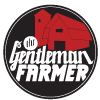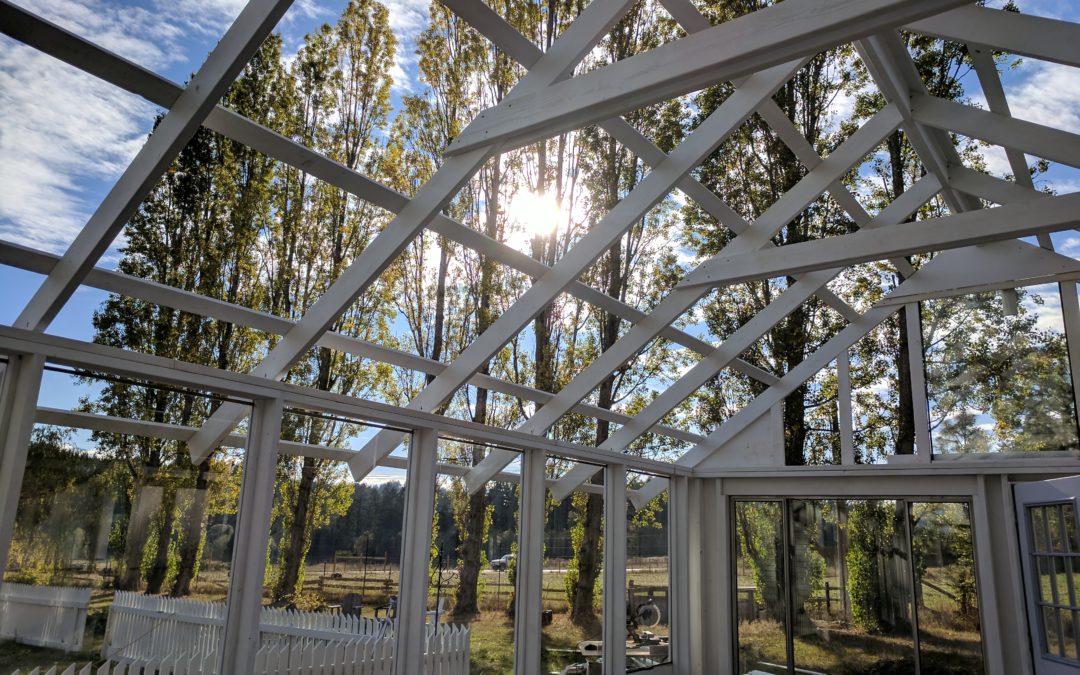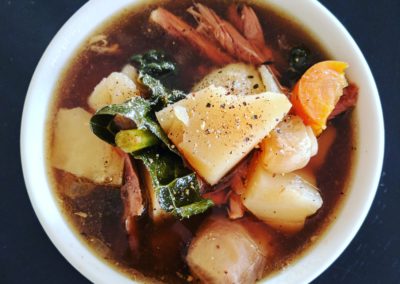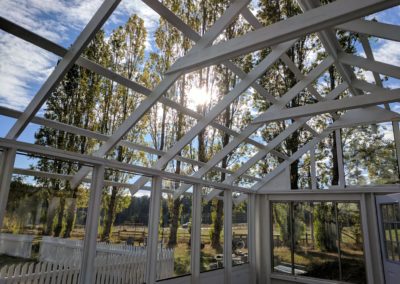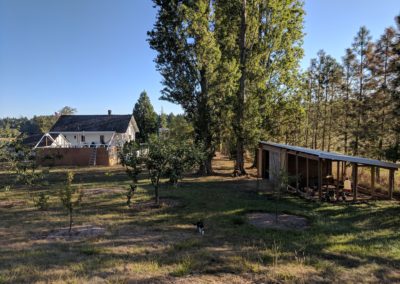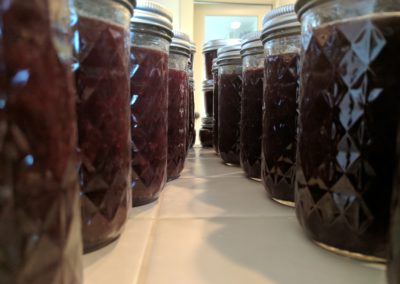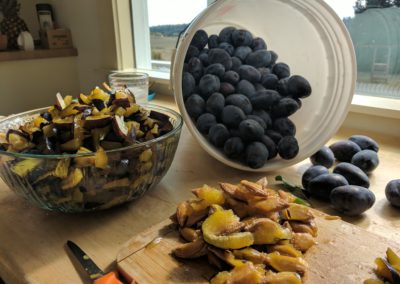Fall is most certainly in the air. There is a chill in our house this morning which has not been present in over a month. Fog hovers above the pasture and slowly dissipates as the sun rises. There are accents of green sparsely scattered across the fields after last week’s rain.
Autumn highlights a changing rhythm. Visitors become less of a fixture in downtown, school buses resume their morning and afternoon routes, and islanders begin to mingle about the cafés and parks again.
The work of harvest must commence in earnest. With harvest comes food preservation and storage. Each year our production increases; nuts multiply in quantity, fruit grows heavier on the limbs, and vegetables build in their abundance.
Fall encourages one last push before winter break. On the list of activities are the garden and the White Greenhouse project. Yesterday I erected the first of eight sets of rafters. Tomorrow I will place the ridge beam. The project is nearing completion.
On Monday I culled the roosters and one hen. Days prior I had been losing all of my eggs to an offending chicken who went about the coop as each hen laid her egg eating the prize she just deposited. One by one, I isolated three hens and a rooster. Immediately my egg count resumed.
Monday’s culling was two-fold: 1.) I had too many roosters as a result of incubation and 2.) I needed to eliminate the egg robbers from my flock. I hate to butcher such young birds in the peak of their production, but the problem was far too great not too.
Rather than butcher all three hens I dispatched the most likely candidate first and tied a cotton string around the ankles of the other two and set them loose in the coop once more. [Update]: The chicken egg consumption resumed almost immediately. I’ve removed the offenders, and eggs counts are back up. I will butcher these two hens the first chance I get.
How to Make Seed Balls from Old Packets of Seed
With this video I describe the way I make seed balls with packets of old seeds that are past their ideal germination period.
Motivated by Masanobu Fukuoka’s “One Straw Revolution, ” I show how to make seed balls from the most simple of materials and by using a five gallon bucket.
Learning to Scythe: I call this FarmFit
With this video I describe the fundamental principles of scything, including the proper stance, when to sharpen the blade, and how to maintain the snath when drawing through each stroke.
Designing a Permaculture Garden Plan
You realize the patterns of traffic across the property; where you spend the majority of your time and the pathways you walk across most frequently. Now you’re most likely prepared to set about designing your ultimate permaculture garden plan. This post goes into detail where to start, the tools I use and what to consider as you put together your plan.
Preparing Garden Beds On San Juan Island
This is my first year planting a garden on this permaculture homestead. It marks a major milestone and brings a great sense of accomplishment to my psyche. When we first moved to the San Juan Islands, I had thought I'd have a small garden in the first year. Oh how...
